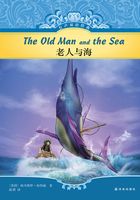The strange adventures of a Scottish sailor named Alexander Selkirk, on an island in the Pacific Ocean, are supposed to be the foundation of the story of Robinson Crusoe. This sailor was a native of Largo, a little seaport town in Fife. He was born there in the year 1676, and from his boyhood he was remarkable for his bold and reckless conduct.
In 1695 Selkirk ran away to sea; he remained absent for about six years. During this period he visited almost every part of the world.
On his return home, he once more entered upon a course of bad conduct, which again brought him into trouble. For brawling in his father"s house, he was compelled to confess his fault in church before the whole congregation.
In the spring of 1702, he set out upon a voyage which led to the strange event that made his name famous. He was appointed sailing-master of the Cinque Ports, a galley of sixteen guns, and the smaller of the two vessels which were under the command of Captain Dampier. His own captain was Charles Pickering, and with him Selkirk was on very good terms.
While at sea, this captain died of fever, and his place was taken by a man with whom Selkirk could not agree. At last the sailing-master made up his mind to leave the ship as soon as he possibly could.
The two vessels captured a Spanish ship, after which they separated, and for some time the Cinque Ports cruised along the American shore. Falling short of water, the vessel ran to the island of Juan Fernandez, on which Selkirk decided to stay. He was landed there, with his chest and a few useful articles.
For a little time after the boat had gone back to the ship, the sailing-master was delighted with the position in which he had been left; but all at once a great fear fell upon him at the thought of being alone in the midst of the ocean, and he shouted for the boat to be brought back. The new captain refused to pay attention to his cries, lifted the anchor of his ship, and sailed away.
Months passed on, during which Selkirk was very sad. All day long he sat upon the rocks by the sea, looking wistfully across the waste of waters for a sail, and hoping in vain for the return of his shipmates.
At length he began to bestir himself. He had a gun, with powder and shot, a knife, a hatchet, and a few other articles. He had also several books, including a Bible.
There were a great many goats on the island, and these he shot for food, though he had neither bread nor salt to eat with the flesh. After a time he became fond of goat"s flesh, and he learned to season it with the fruit of the pimento tree, a kind of pepper which grew on the island.
A band of sailors who had at one time been staying on the island had sown some turnips. Selkirk found a large crop of them. He also supplied himself with vegetables from the cabbage trees.
Alexander Selkirk"s Cave on Juan Fernandez IslandWith the wood of the pimento tree he built two huts: the larger he used as a sleeping and sitting room, and the smaller one as a kitchen. These rooms he rudely furnished with articles of his own manufacture, and also made cages of goat-skins.
By keeping himself as busy as possible, he got the better of his sad feelings, and became somewhat settled in his mind. Every day he sang a psalm and engaged fervently in prayer, and tried as far as he could to live a new life.
When his powder was done, he caught the goats by speed of foot, and became so fleet that, when he afterwards got away from the island, he could run faster than a dog. The cats and rats, of which there were large numbers on the island, gave him much trouble at first; but by feeding the former, he made them tame enough to live with him and to keep away the vermin.
When his clothes were worn out, he made garments of goat- skins, which he stitched together with a nail that he used as aneedle. Having some linen, he also made several shirts, sewing them with the worsted out of his stockings. When his shoes and stockings were done, he went barefoot, and in time his feet became quite hard.
To amuse himself, he carved his name and his age on the trees. He also taught his cats various tricks, and some of his goats learned to follow him like dogs.
Twice his life was in great danger. He had several times seen ships out at sea; but one day two vessels came to anchor, and some of the men landed. They were Spaniards, and, as that country was at war with Great Britain, the men fired at him; but, fortunately for Selkirk, they missed him, and he lay concealed in the branches of a tree until the ships sailed away.
On another occasion, while he was out hunting, he followed a goat right up to the edge of a precipice which was hidden by some low bushes. Both Selkirk and the goat he was following fell a considerable distance. Selkirk lay for some time completely stunned. When he came to himself, he found the dead body of the goat beneath him.
When Selkirk had been about four years on the island, two British ships appeared in sight. As the vessels approached the island, he prepared a fire; and, when night came on, those on board saw the flames.
In the morning a boat"s crew landed, and were received by Selkirk with tears of joy. He returned on board with them, and found that the vessels had been sent out against the French and the Spaniards. One of the first of those whom he met on boardwas Captain Dampier, who gave Selkirk a good character, and he was engaged as mate on one of the vessels.
In the early part of the year 1712, he arrived once more in his native town. It was a Sabbath day, and all his father"s family were at church. Selkirk followed to the sacred building, and his mother, recognizing him at once, rushed to bid him welcome.
For some time he seemed to be quite happy in the society of his friends; but often a great longing for the quietness of his island home came over him. At a little distance above the town there was a cave, in which he loved to sit alone. He also spent a great part of his time fishing in the bay.
It is said that he told his story to Defoe, who at once made out of it his famous book, The Adventures of Robinson Crusoe. Selkirk afterwards became an officer in the navy, and died in 1723. A monument to his memory was erected in the island of Juan Fernandez in 1868. His statue also stands in his native town of Largo, in Scotland.
Author.-Anonymous.
General-If you have read Defoe"s Robinson Crusoe, consider how the true story of Alexander Selkirk resembles that Betional one. Note down points of resemblance and points of difference. Find Juan Fernandez on the map. The island is called after Juan (or John) Fernandez, a Portuguese navigator who discovered it in 1574. Find Largo on the map. It is in East Fife.















